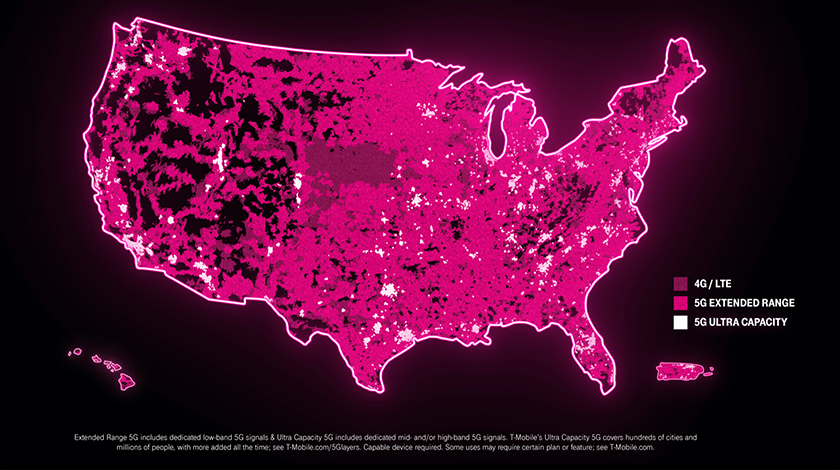5G is well and truly on the way, promising to bring next-generation connectivity to all of our mobile devices. 5G has actually been in the works for years now, but it wasn’t until the past few years that carriers started deploying their nationwide 5G networks. Verizon and AT&T were the first to deploy 5G networks, but really, T-Mobile 5G was the first to be available nationwide.
T-Mobile’s 5G networks rely heavily on Sub-6, allowing the company to offer a widespread network that’s about as fast as LTE networks were, if not a little faster. But faster T-Mobile 5G networks are coming — and they’re coming soon.
Are you a T-Mobile customer that wants to know more about the company’s growing network? Here’s everything you need to know about T-Mobile’s 5G network.
What is 5G?
5G is essentially the latest generation of network technology, offering better connectivity, lower latency, and more, than even the best 4G LTE networks out there.
But 5G isn’t just one technology — it’s actually a collection of technologies. 5G exists across a range of different frequency bands, with those lower bands offering wider reach but slower speeds, and the higher bands offering faster speeds but lower reach. Really good 5G connections will make use of all of these different bands.
5G networks have been rolling out for some time now, and they’re widely available as long as you have a compatible phone. But right now, they’re not really all that much better than 4G LTE networks.
T-Mobile’s 5G network

T-Mobile wasn’t the first to roll out a 5G network, but it was the first to turn on a nationwide 5G network. While the likes of Verizon and AT&T relied on high-frequency mmWave connections early on, T-Mobile used low-band frequencies to build an actually widespread network.
Since then, T-Mobile has seriously expanded on its network, turning on mid-band frequencies that are aimed at offering a compromise between fast speeds and geographic reach.
Here’s a deeper look.
Sub-6
As mentioned, T-Mobile relied on Sub-6 frequencies early on to deliver widespread 5G connectivity. Sure, that connectivity wasn’t all that fast, but at least it served as a base on which the carrier could improve its network. T-Mobile turned on its nationwide 5G network in late 2020, and if you live in a relatively populated area, chances are you can connect to it right now.
Mid-Band
While AT&T and Verizon had to delay their rollout of mid-band spectrum, T-Mobile was able to start early — giving it a serious head start. In fact, the company said it would cover 200 million people with mid-band spectrum by the end of 2021 — a goal that it achieved in November. Of course, the carrier only has 100 million subscribers — which is far from the theoretical 200 million that could use the carrier’s Mid-Band network.
T-Mobile calls its mid-band network “Ultra Capacity,” and it’s relatively widely available. You can see if you have access to T-Mobile’s Ultra Capacity network at its network map.
mmWave
Unlike the other major carriers, T-Mobile hasn’t really placed much of an emphasis on mmWave networks, though it does roll mmWave networks into its Ultra Capacity label. The carrier has deployed mmWave in a handful of cities, however it’s not widely available by any means. It’s expected that over time, the carrier will start to shift its focus to mmWave, allowing customers to get faster speeds in densely populated areas. We’ll have to wait and see how long that takes though.
T-Mobile’s 5G plans
So what’s next for T-Mobile’s 5G rollout? Well, over time, the carrier will continue to deploy its mid-band networks, allowing for relatively fast speeds that are available around the country. Then, it will start to turn its attention to mmWave.
As far as immediate plans go, T-Mobile has said that it will extend its mid-band footprint to 250 million people in 2022, with the goal of covering 300 million people by the end of 2023.








